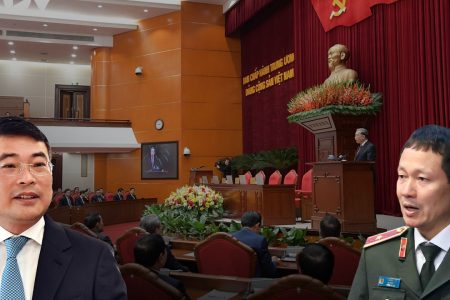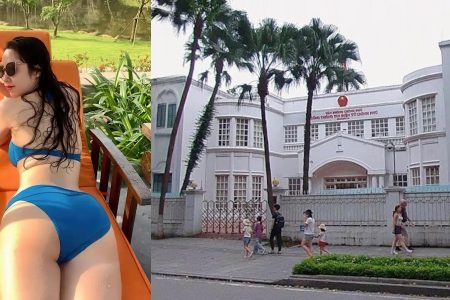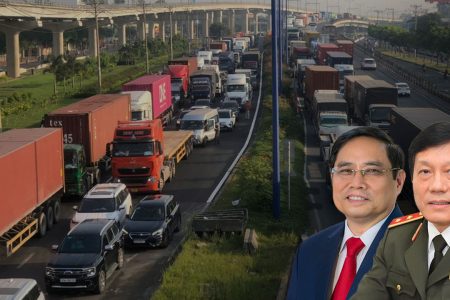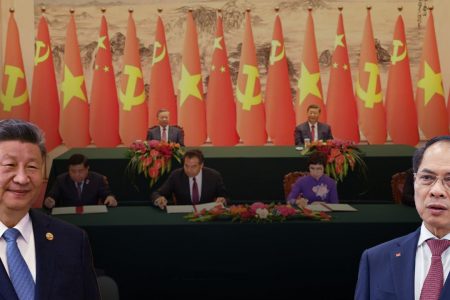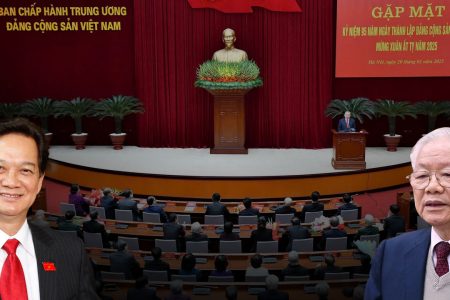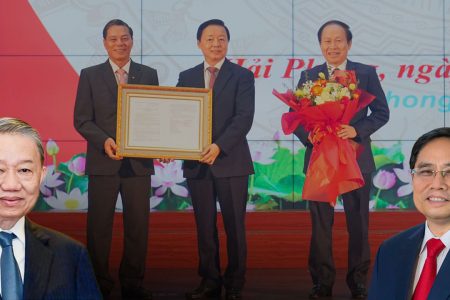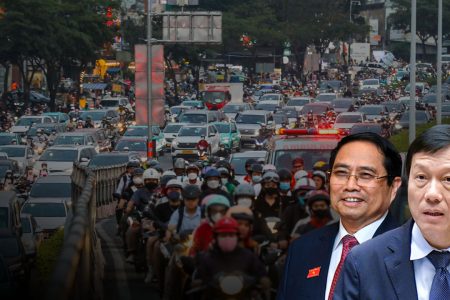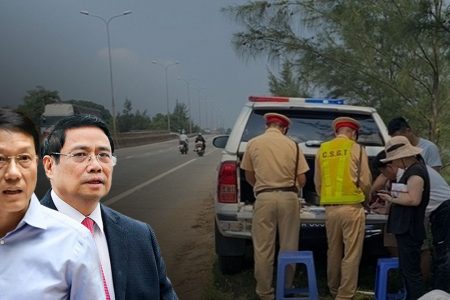
China completed 659 km of fence at the border with Burma in just 2 months. This is part of the project “Great Wall of the South” of China, stretching along the border from Burma (about 2,170 km) to Vietnam (nearly 1,380 km). Why is Beijing speeding uUp its border fence?
“Great Wall of the South”
According to Irrawaddy page on December 23, 2020, China started to build fences along its border with Burma in October 2020 in the states of Kachin and Shan, “mainly in densely populated areas” in which many sections violating the regulation 10 meters away from the border line (October 1960 border agreement), said U Thein Min Tun, director of border issues at the Legal Consular Department of the Ministry of Foreign Affairs of Myanmar.
Many videos posted on social media, quoted by Burmese media, show some sections that are temporarily fenced with barbed wire coils, but many are solidly built with brick or concrete pillars and iron bars about 3 meters high, wrapped in barbed wire above.
Answering RFI Vietnamese, Professor Jean-Pierre Cabestan, Hong Kong Baptist University, commented:
“At the border with Burma, the Beijing government wants more strict control over the border and avoids too much trouble with Burma, including the management of ethnic minorities, like the Kachins, Karen, the Wa or other ethnic groups, often have difficulty with the central government and still cross the border to China.
I think it is a way for Beijing to stabilize the border with Burma because there are frequent security problems, as well as the smuggling of weapons. They may find that many factors have not been controlled, including the rebels in northern Burma.”
At the Vietnam-China border, the fence is built by both sides, not in consecutive, 3-4 meters from the landmark or the boundary line to avoid overlapping or encroaching on the demarcated border.
In 2012-2017, China built 12 km of solid fences, 4.5 meters high, along the Ka Long River (the section flowing north of Mong Cai city, Quang Ninh province), the natural border between the two countries. The total value of the project is $29 million, according to Xinhua News Agency, the Australian newspaper ABC quoted on Jan 24. At the end of 2019, Quang Ninh province also plans to build a fence along this river, on the Vietnamese side, to prevent smuggled goods across the border.
China continues to build solid fences around 2018 along the border with Quang Ninh and Lang Son provinces of Vietnam, with a length of about 200 km, based on the information below.
Around the landmark No. 1089 (Keo Hill, Lang Son Province), when explaining the smuggling situation here, Tan Thanh Customs Branch, was quoted by giadinh.net.vn on November 18, 2019: “From May 2019, all the points contiguous to the Chinese side on the border under the control area” of Tan Thanh Customs Branch “have basically been fenced off by the Chinese side with a fence system of 3.7 meters high (only a small gap remains at the junction area and the high hill without fenced).”
In early April 2020, before the news of China building border walls to halt illegal smuggling of goods, Mr. Nguyen Cong Truong, vice chairman of Lang Son Provincial People’s Committee, explained: “The Chinese side has built a fence with a length of about 100 km. This fence was built on Chinese soil, near the Co Sa opening (Chi Ma border gate, 1223 landmark, Lang Son province) in accordance with the provisions of the border agreement between the two sides” and “China has noticed Vietnam about its works” (Tuoi Tre, April 7, 2020).
Many videos of some Vietnamese YouTubers show that the fence has gold-painted pillars, blue-painted sharp bars, is covered with a layer of wire at the base of the wall and above the fence, has been completed at landmarks 1270, 1296 and in November 2020, stopped at milestone 1328 (Binh Lieu district, Quang Ninh province), according to the video of Tasting TV on YouTube. From this area you can see a panoramic view of the fence crawling on the mountains, cutting through the trails. The video also shows the protruding iron head waiting to continue construction of the “Great Wall of the South” from east to west.
Build a wall to fight smuggling
In 2018, when the border fence construction was accelerated, it was also the time when China advocated to strengthen the quality control of imported goods, promote the prevention of smuggling and bring goods exchange activities to border residents on orderly.
According to Professor Carl Thayer, University of New South Wales (Australia), “Vietnam has the same benefits as China in preventing cross-border smuggling, especially Vietnam also has a large trade deficit with its neighbor.”
Preliminary statistics from Vietnam Customs confirm this trend. In 2020, Vietnam had a trade deficit of $35.2 billion from China, an increase of 3.74% compared to 2019. China continues to be Vietnam’s largest trade partner with a total bilateral trade turnover of $133.09 billion, of which Vietnam’s exports to China reached $48.9 billion and its imports from China reached $84.1 billion.
From anti-illegal immigration to Covid-19 pandemic control
When the Covid-19 outbreak broke out in China in early 2020, the Beijing government decided to tighten control over people and goods at the border. These measures continue to be strengthened, especially for frozen foods, according to information dated January 21, 2021 of the Ministry of Industry and Trade of Vietnam.
So besides the above reasons, is there any other motive? Professor Jean-Pierre Cabestan commented:
“It is difficult to give an answer to this question. I think there are many factors. The first is to control the Covid-19 pandemic by preventing people from going out or entering Chinese territory.
It could also be to block the Chinese from migrating. Indeed, due to the Covid-19 translation, economic activity was also reduced, so many Chinese people tried to cross the border into Southeast Asian countries to live in these countries.”
In fact, controlling illegal immigration is also a burning problem for Vietnam. This is a potential source of Covid-19 infection. Closer to Tet, the number of workers from China trying to return to Vietnam by trail, the opening has increased dramatically, to escape isolation, in the context of Vietnam still closing the border since March 2020. In the first three weeks of January 2021, only the border force in Lang Son province (with 231 km of border with China) “discovered, prevented and used nearly 600 illegal entries,” according to Soha.vn (January 25, 2021).
In 2020, 31,460 people were arrested for entering Vietnam illegally, of which about 25,000 people were from China. The website VnExpress (English version, January 9, 2021) said that 153 people were investigated for “organizing other people to enter Vietnam.”
Danang, where the second outbreak originated, is a city that attracts a lot of Chinese online gambling, organized by their fellow countrymen, very methodical and using high technology. Vietnam’s Minister of Public Security, in September 2019, once admitted that “foreigners increasingly organized criminal acts using high technology (fraud, organizing online gambling …). Regarding the reason, according to Mr. To Lam, quoted by Thanh Nien online newspaper (September 13, 2019), it is due to loopholes and shortcomings in the management of foreigners’ residence and activities.
After Da Nang became the Covid-19 pandemic epicenter, from August 2020, many lines that illegally brought Chinese people into Da Nang were quickly destroyed. Often the mastermind is Chinese, combined with local Vietnamese to prepare logistics and transport from the border. Vietnam is also a transit place for many Chinese to go to a third country, for example to Cambodia for gambling. China is also concerned that these subjects, when they return illegally, can carry corona virus.
Control of labor resources?
In addition to the above objects, the fence along the border is also said to prevent Chinese people from migrating for different reasons, according to Professor Jean-Pierre Cabestan:
“I think China wants to prevent its citizens from emigrating to Vietnam. That would complicate the bilateral relationship. In my opinion, but it is also possible that I am wrong. Either way, China wants to control its borders. This is in Beijing’s general policy.”
Employment is one of the main motivations for Chinese to come to Vietnam. China does not want to get the reputation that its citizens go underground or commit crimes in another country. However, this is the reality from the last few years. In order to avoid the contagion of the US-China trade war, many Chinese businesses have moved to Vietnam. They immediately need skilled workers who understand the same language, so they are willing to hire Chinese illegal immigrants to avoid wasting time training local workers.
This in turn violates the Vietnamese regulations “can only use foreign workers when domestic workers fail to meet the requirements.” This fact has been recognized by the Foreign Affairs Committee of Vietnam’s National Assembly in the years 2013 to 2019. Numerous Chinese workers live and work a lot in Binh Duong province, “set up villages, set up hamlets” in areas. Chinese companies won the bid, making local people concerned, according to Thanh Nien newspaper (May 11, 2020).
Before the pandemic, many people entered Vietnam on the basis of sightseeing tours but stayed to work. This road was suspended because Vietnam closed its border from March 2020, so illegal immigration tends to increase.
Finally, according to Professor Carl Thayer, the wall that Beijing built along the border may also hinder Chinese dissidents wanting to escape. China’s Yunnan province, bordering Vietnam, Laos and Burma, has long been regarded as a “defector for Uighurs and others seeking asylum in the West.” This is also the path for the North Koreans seeking to escape the Kim Jong Un regime.
Thoibao.de (Translated)




